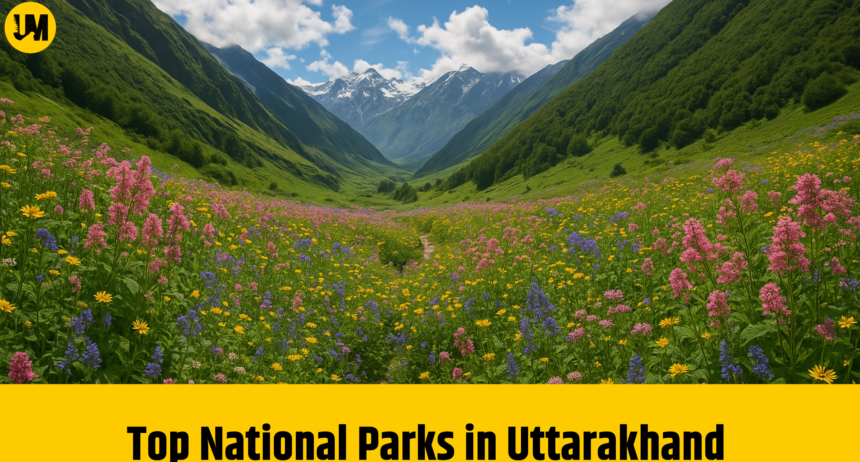Uttarakhand, the land of gods, is known for its spiritual places and natural beauty. Nestled in the lap of the Himalayas, this Himalayan state is India’s richest ecological state. Uttarakhand has a diverse topography, from lush green foothills to snow-capped mountain peaks. The state is home to renowned National Parks and wildlife sanctuaries, exotic flora and fauna, and breathtaking landscapes that range from alpine meadows to dense forests. In this blog, we will explore various National Parks in Uttarakhand and the flora and fauna that they protect.
1. Gangotri National Park
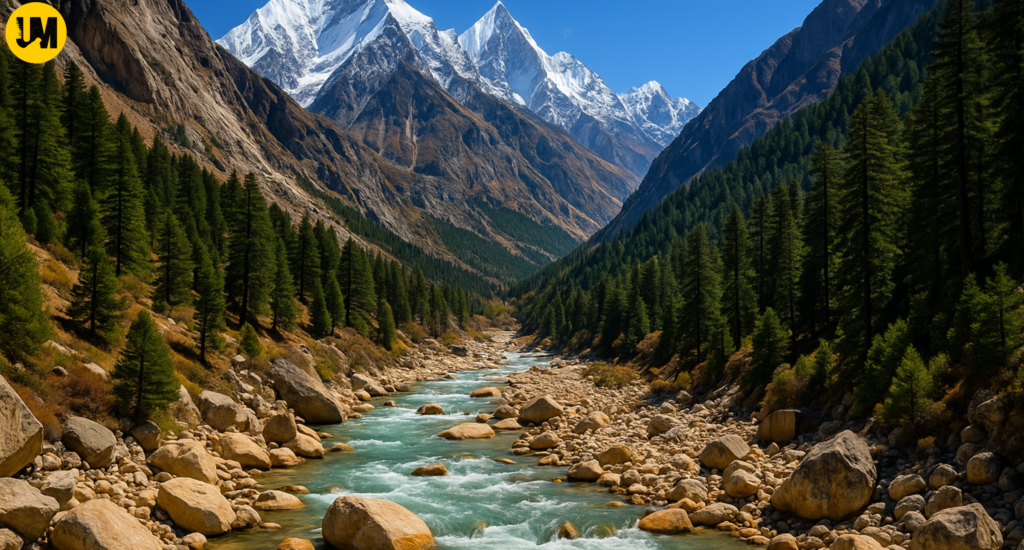
Gangotri National Park is one of the largest National parks in India and the largest in Uttarakhand, spread over an area of around 2390.02 km2 in the Uttarkashi district of Dehradun. It was established in the year 1989. The National Treasure is known for its rugged terrain, glacial systems, steep valleys, and alpine meadows. It has great cultural significance as the sacred Gangotri temple and the Gaumukh trek route surround it. It borders the Nanda Devi National Park and Kedarnath Wildlife Sanctuary and is part of the greater Himalayan ecosystem.
Special features:
- Flora: Deodar, Blue Pine, Silver Fir, Spruce, Maple, Rhododendron arboreum, Rhododendron campanulatum, Juniper shrubs, Himalayan Birch, Colorful wildflowers, and medicinal herbs such as yarsagumba, kutki, and atish.
- Fauna: Snow Leopard, Himalayan Blue Sheep, Himalayan Tahr, Musk Deer, Black Bear, Brown Bear, Red Fox, Himalayan Marmots, Himalayan Monal, Snow Partridge, Bearded Vulture, Golden Eagle, Tibetan Snowcock, Himalayan Griffon, Numerous high-altitude finches and warblers
Popular Treks:
- Gaumukh Trek: This trek leads to the snout of the Gangotri glacier.
- Tapovan Trek: The trek is known for its alpine meadows and spectacular views of Mt. Shivling.
- Kedar Tal Trek: A glacial lake trek that is surrounded by majestic peaks.
Best Time to Visit:
May to June and September to October are the ideal months for visiting Gangotri National Park. The park remains closed in winter due to the harsh climate and snow. Avoid during monsoon.
Places to Visit in Gangotri National Park:
- Nelong Valley: A Cold, deserted mountain area that looks like a replica of Tibet. It is a visit for nature enthusiasts.
- Bhojbasa: A scenic spot on rugged terrains situated at an altitude of 3775 m above sea level. The trek leads you through rugged terrain along the Bhagirathi River.
- Gangotri Temple: A primary Hindu pilgrimage site, and is the highest temple dedicated to Goddess Ganga.
2. Rajaji National Park
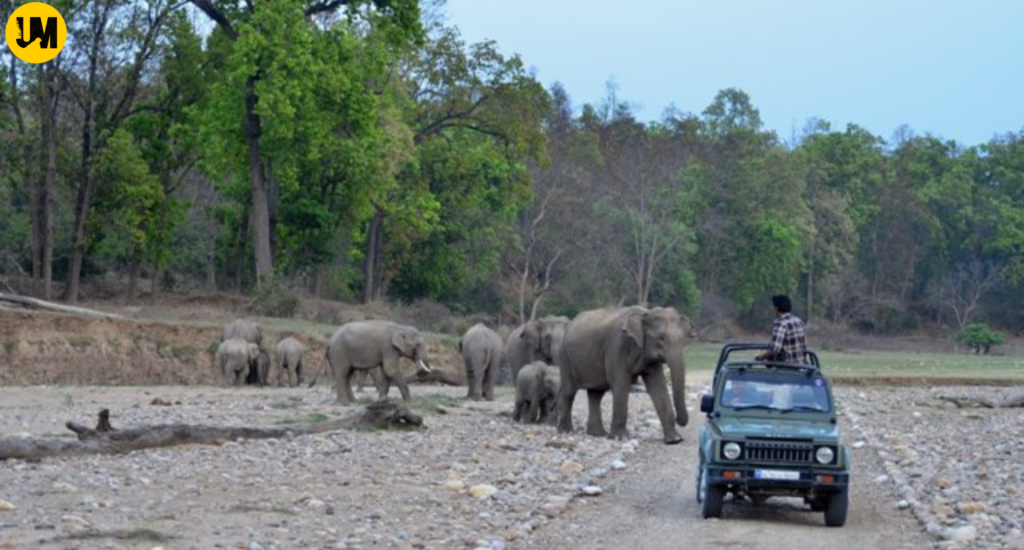
Rajaji National Park in Uttarakhand is the second largest protected area present in the districts of Pauri Garhwal and Haridwar of Uttarakhand. It was formed in 1983 after merging three wildlife sanctuaries, Rajaji, Motichoor, and Chilla. It was named after the freedom fighter Shri C. Rajgopalachari. The park is known for its adventures like rafting, bird watching, and jungle safari in which you can spot indian tigers and Asian elephants in their natural habitat.
Special Features:
Flora: Dominated by sal trees, teak, shisham, bamboo, and semal. Seasonal rivers like the Ganges and Song enrich the park’s flora.
Fauna: Elephants (over 500), Tigers, Leopards, Goral, Sambhar Deer, over 300 bird species, including Great Hornbill, Woodpeckers, Peafowl, and reptiles such as Cobra, Python, and Viper.
Popular Trails:
- Chilla- Neelkanth Mahadev Trail: The trek starts from Chilla Gate, Rishikesh, and ends up at the Neelkanth Mahadev Temple. The trail is 12 km long one way. It takes one through dense sal forest, and you might spot some elephants on your way, which is excellent for nature lovers.
- Asarori to Maldevta Forest trail(Dehradun Range): The trek leads you through dense sal and bamboo forest, and if you are lucky enough, you get to spot peacocks and wild boars. The trail is best for cycling and is usually less crowded.
Best time to visit: Mid-November to June is considered the best time to visit Rajaji National Park.
Places to visit in Rajaji National Park:
- Chilla Range: It is near Rishikesh and Haridwar and is best for wildlife watching, safari, and nature walks. Here, you can even stay at the forest rest house and make the most of your visit.
- Motichoor Range: Located on the Haridwar-Dehradun Highway, the place is ideal for those looking to spend some peaceful time in nature with less crowd. Here, you can go for serene jungle drives, spot elephants, and explore the Kansrao and Kunao forest zones.
3. Nanda Devi National Park
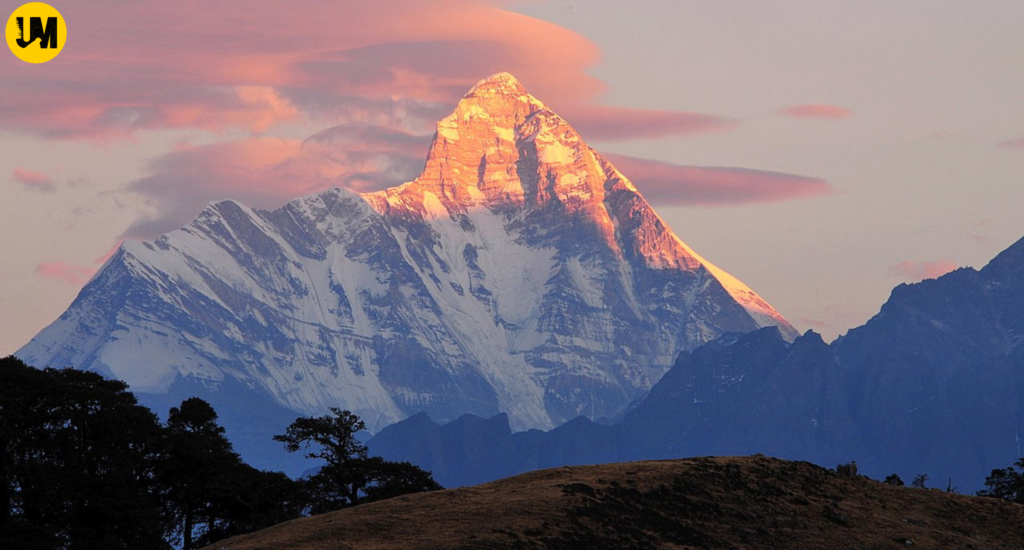
Located in the Chamoli district of Uttarakhand, Nanda Devi National Park is spread over an area of 624.60 km2 and was established in the year 1982. The park is known for its famous and second-highest peak in India, i.e., Nanda Devi, and it’s the highest peak in Uttarakhand. The glacial basin of the park is drained by the Rishi Ganga River and is encircled by mountains such as Dungari, Trishul, and Nanda Devi East. It is recognised as a UNESCO World Heritage site due to its unique terrain and biodiversity. This National Park is a part of the Nanda Devi Biosphere Reserve, which is spread over Chamoli, Pithoragarh, and Bageshwar.
Special Features:
Flora: Alpine and subalpine vegetation, including birch, rhododendron, juniper, and fir. The region is also home to rare medicinal plants and cold desert flora.
Fauna: Snow Leopard, Himalayan Tahr, Serow, and birds like Himalayan Monal, Snow Partridge, and Rosefinch, among others, harbours such as Langurs, Blue Sheep (Bharal), and Brown Bear.
Popular Treks:
- Lata Village to Lata Kharak to Dharansi Pass: The trek route requires a permit and a guide to enter the buffer zone of Nanda Devi.
- Joshimath → Lata → Tolma → Dharansi → Debrugheta (Outer Sanctuary Trek): This trek route is ideal for only serious and professional trekkers or researchers.
- Valley of Flowers and Hemkund Sahib: It shares the same biosphere reserve and is easy to access, ideal for botanists and nature lovers.
Best Time to Visit: May to June and September to October are the best months to visit here. Avoid during monsoons and in winter; the park is closed due to heavy snow.
Places to Visit in Nanda Devi National Park:
- Tolma Village: To experience the high-altitude culture and untouched landscape of the area, visit Tolma Village and get deeper insights into the local culture and life. It is ideal for camping and cultural exchange.
- Dharansi Pass: It’s the closest legal point from which you can view the core sanctuary, and it requires a forest department permit and a guide.
- Joshimath: It is the base for all the treks to Nanda Devi and the Valley of Flowers. From Joshimath, you can even take a ropeway to Auli.
4. Jim Corbett National Park
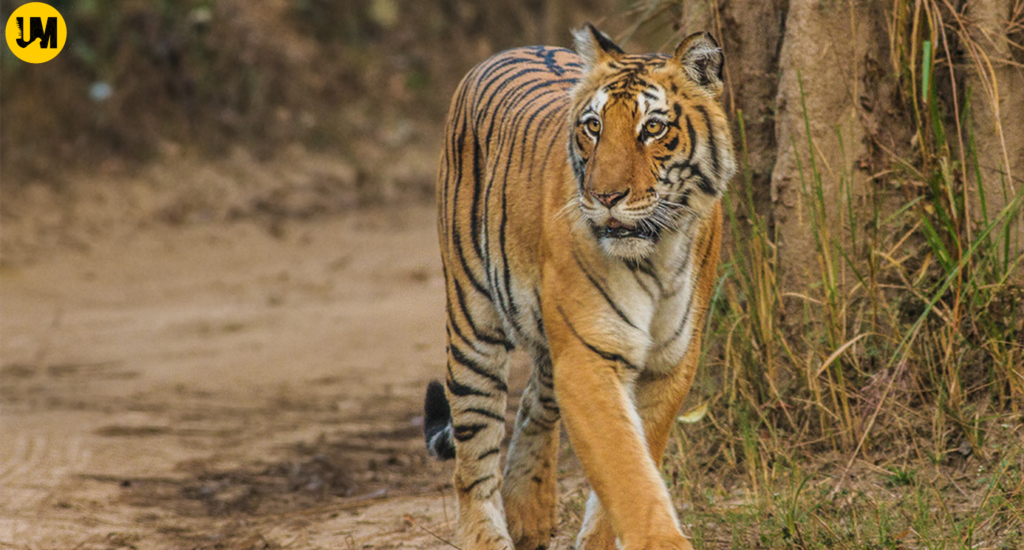
Spread over the beautiful districts of Almora, Nainital, and Pauri Garhwal, Jim Corbett National Park is one of the oldest protected areas in India and Asia. It’s popular for its tiger reserves, safaris, and other eco-tourism activities. There are a total of eight zones with different entry gates. Only four tourist zones are open for visitors in winter, and the others are open in summer. The eight zones are named the Dhikala Zone, the Bijrani Zone, the Durgadevi Zone, the Sonanadi Zone, the Garjiya Zone, the Dhela Zone, and the Pakhro Zone.
Special Features:
Flora: Sal, oak, bamboo, grasslands, Riverine vegetation along Ramganga, Mandal, Sonanadi, Common Trees like Sal, Rohini, Haldu, Peepal, Mango, Medicinal plants, and flowering shrubs across zones.
Fauna: Bengal Tiger (over 250 tigers), Leopards, sloth bears, Asian elephants, jackals, wild boars, Deer species: Sambar, Spotted Deer, Barking Deer, Primates: Langurs, rhesus macaques, Reptiles: Gharial, Mugger crocodile, monitor lizard, various snakes, Birds: Over 600 species, Great hornbill, crested serpent eagle, vultures, kingfishers, parakeets, Migratory birds during winter: ducks, storks, cranes.
Popular Treks:
- Sitabani Forest and Temple Trek: A short trek route of around 2-3 hours that leads to the Sitabani temple. The path leads one through dense sal forests, ideal for wildlife and bird spotting.
- Tamari Dam Nature Walk: Great for spotting migratory birds, watching, and spotting elephants and deer in the early morning or the evening.
Places to Visit in Jim Corbett National Park:
- Corbett Museum: Go back to the history of the conservation movement by visiting the museum. Located 33 km away from Ramnagar in Kaladungi is the Corbett Museum, where you will find vintage rifles, letters, photographs, and hunting gear of the famous hunter Jim Corbett.
- Garjia Devi Temple: Dedicated to the goddess Garjia, the temple is sacred and visited by many people, especially during the Kartik Purnima. The temple is beautifully located on a significant rock midstream in the Kosi River.
5. Valley of Flowers National Park
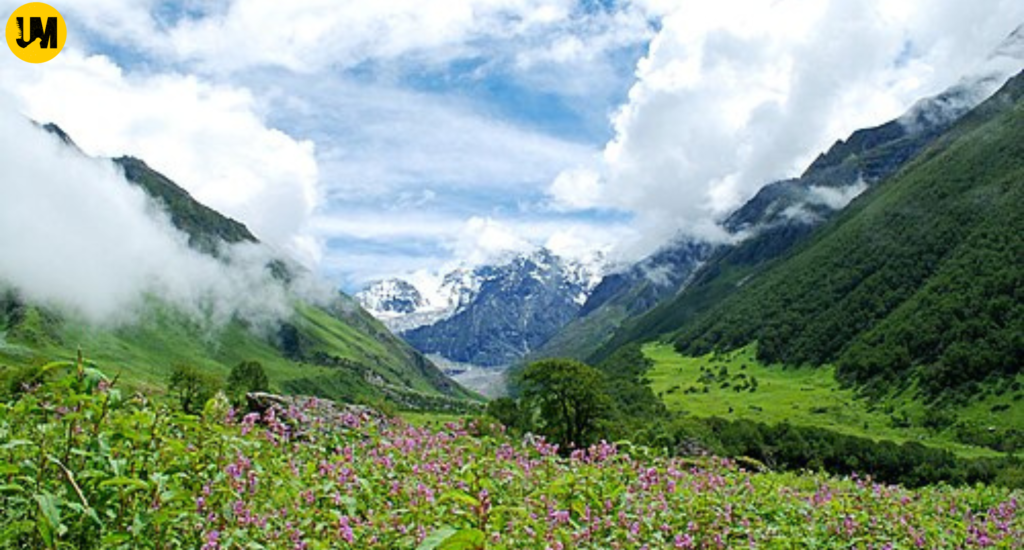
Situated in the Chamoli district, the Valley of Flowers National Park has been a UNESCO World Heritage Site since 2005. It’s also part of the Nanda Devi Biosphere Reserve. Trekking inside this national treasure takes one through the endangered wilderness along the streams of the Pushpawati River, well-maintained terraced fields, stunning waterfalls, and vibrant alpine meadows. To get spectacular views of peaks such as Nar Parbat, Nilgiri, Rataban, and Saptasring, visit during the spring season when the national park is in full bloom.
Special Features:
Flora: Blue Poppy (Meconopsis), Brahma Kamal (Saussurea obvallata – the sacred flower of Uttarakhand), Primulas, Cobra Lily, Marsh Marigold, Anemones, Daisies, Bellflowers, Edelweiss, Geraniums, and Sedges. The valley is a botanical treasure trove, especially in July and August, when meadows turn into a riot of colours.
Fauna: Asiatic Black Bear, Snow Leopard (very rare), Musk Deer, Red Fox, Himalayan Tahr
Blue Sheep (Bharal), Monals, Snow Pigeons, and other Himalayan birds.
Popular Treks:
- Valley of Flowers Trek(Main Trek): The trek starts from Govindghat and takes around 3-4 days and is considered easy to moderate. It is ideal for first-time trekkers and nature enthusiasts.
- Hemkundsahib Trek from Gangharia: The trek can be completed in a day but is considered moderate to challenging due to the steep climb. The trek leads to a glacial lake that is a sacred Sikh pilgrimage site.
Places to visit in the Valley of Flowers
- Ghangaria Village: It serves as the base camp for the Valley of Flowers and Hemkund Sahib.Ideal for cultural exchange, a night’s stay. A Helipad facility, along with a food stall, is available here.
- Bhyundar Village: A Historic Himalayan village and site of the Bhyundar Ganga waterfall. The place is now abandoned, but it walks you through the quiet remains of the town, showcasing its natural charm, ideal for a photogenic detour for trekkers.
Conclusion: National Parks in Uttarakhand: A Guide to Flora and Fauna
Uttarakhand’s National Parks are not just vacation spots; they are living ecosystems. To experience the wilderness of these parks, pack your bags and get ready to explore the unique landscape and natural charm of these places that will surely leave you spellbound with their beauty and uniqueness. Whether you are a trekker, a nature enthusiast, or a researcher, Uttarakhand has something to offer for every kind of traveller. For more such blogs, follow Uttarakhand Magazine.

